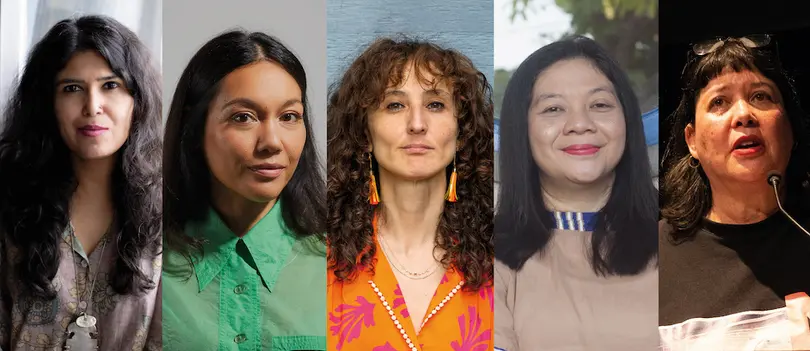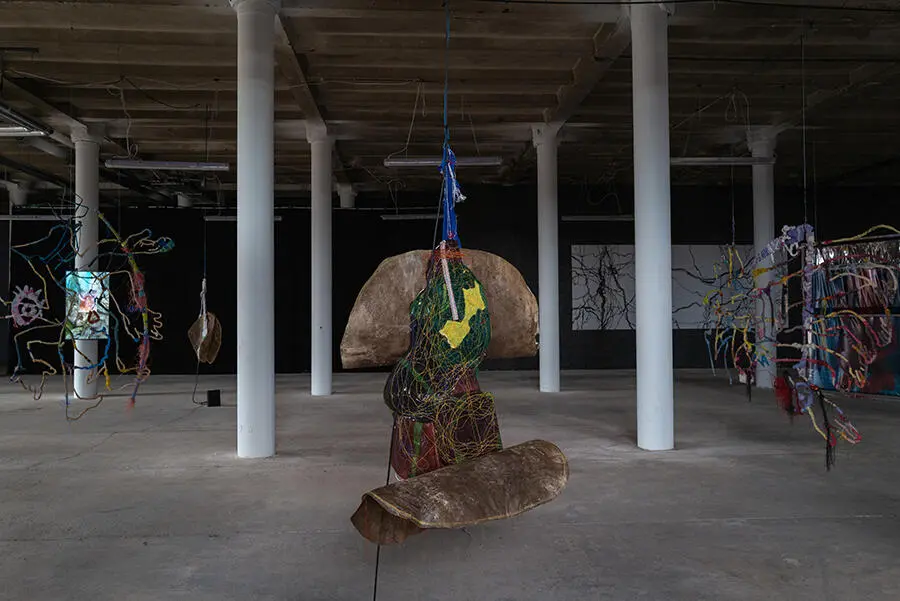Unveiling Heritage and Trauma through the Eyes of a Border Artist
Unveiling Heritage and Trauma through the Eyes of a Border Artist
- Artist Griselda Rosas, born in Tijuana, explores border narratives through drawings and sculptures, blending history and emotion.
- Her debut solo exhibit, “Yo te cuido,” at Museum of Contemporary Art San Diego’s La Jolla location, delves into themes of colonization, bilingualism, and cultural symbols.
- Her debut solo exhibit, “Yo te cuido,” at Museum of Contemporary Art San Diego’s La Jolla location, delves into themes of colonization, bilingualism, and cultural symbols.
A JOLLA, California — Emerging from the crossroads of Tijuana in 1977, Griselda Rosas, an artist deeply attuned to the narratives echoing on either side of the California-Mexico border, channels the timeless tales of conquest, colonization, and transformation into a visual symphony of drawings and sculptures. Her works, woven together with threads of history, paint strokes of emotion, and layers of collage, unfurl like archaeological artifacts embodying the fusion of diverse cultures and chronicles.
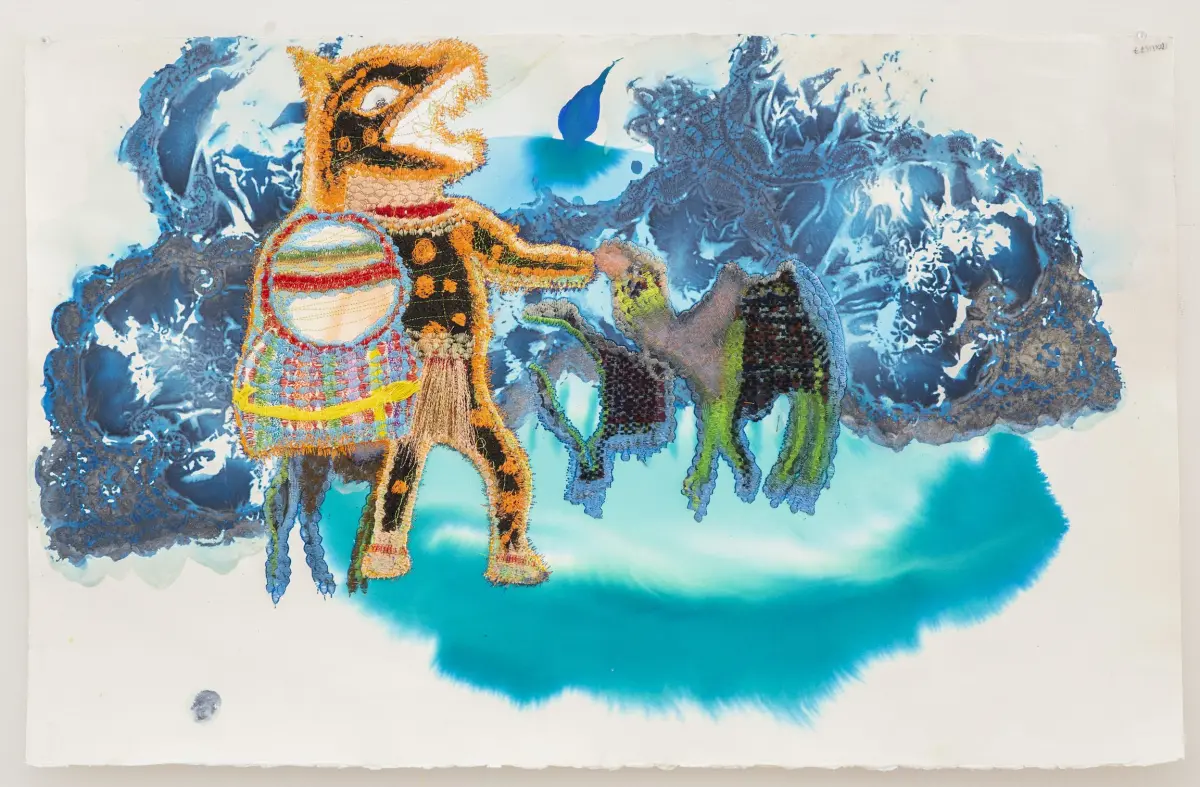
With an MFA from San Diego State University and a role as an art educator at a local community college, Rosas is experiencing what Jill Dawsey, Senior Curator at the Museum of Contemporary Art San Diego, describes as a “resounding emergence.” In a recent conversation with Hyperallergic, Dawsey revealed that Rosas’s inaugural solo exhibition, “Yo te cuido” (“I take care of you”), is now gracing the walls of the museum’s La Jolla venue. The title, as Dawsey explains, encapsulates both a nurturing sentiment and a promise of safeguarding, drawing inspiration from Rosas’s skillful juxtaposition of objects like slingshots and toy soldiers, which become both playthings and symbols of conflict, colonization, and cultural fragmentation.
Dawsey, alongside co-curator Anthony Graham, orchestrates a captivating and meticulous showcase within the museum’s newly revitalized galleries, conceived by Annabelle Selldorf. The expansive, transformed space provides an ideal stage for Rosas’s immersive sculptures and textile compositions, permitting the colors and interplay of materials to resonate freely.
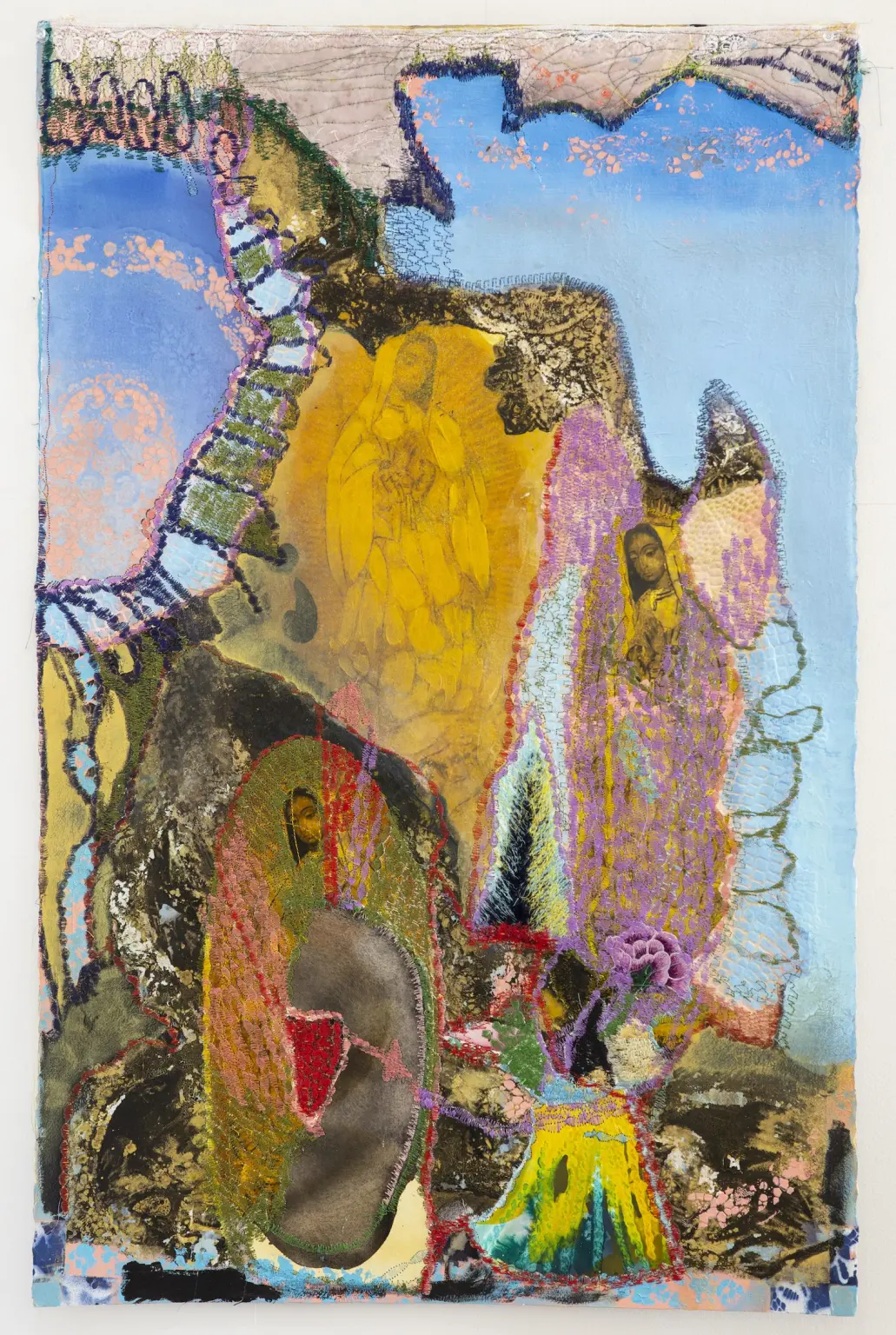
Within this exhibition, Rosas delves into quintessential border themes: the imposition of Catholicism upon Indigenous cultures, the weight of colonial rule, the tapestry of bilingualism, and the resonance of cultural icons like Our Lady of Guadalupe and traditional Indigenous regalia. Her medium becomes a palimpsest of textures as she fuses machine and hand stitching, skills handed down through generations of women in her family, endowing her creations with a quilted aesthetic. The machine stitching ruptures the surface of the paper base, a symbolic echo of the border fence cleaving California from Baja California, Mexico, before being mended through embroidery and collage.
Upon entering the gallery, visitors encounter a striking installation of oversized, handcrafted slingshots suspended like stringed instruments, directly opposing the entrance. This installation, titled “Un camello en el ojo de una aguja” (“A camel in the eye of a needle”), encapsulates Rosas’s approach, weaving elements of the natural world with allusions to colonization and the harrowing encounters between Indigenous communities on both sides of the border during periods of European and American occupation.
The slingshots are fashioned from branches harvested from Rosas’s parents’ yard in Tijuana, their rubber strings hailing from Michoacán, Mexico, a nod to the Indigenous traditions of Mexico and the Latino communities on the U.S. side of the divide.
These thematic threads continue in Rosas’s collages and painted tableaux, where symbolism and juxtaposition convey a dialogue on border identity. Many tableaux evoke fantastical creatures symbolizing colonization, serene depictions of Madonna, and apprehensive horses — all metaphors embodying memories of cultural and religious imposition by Spanish and American forces.
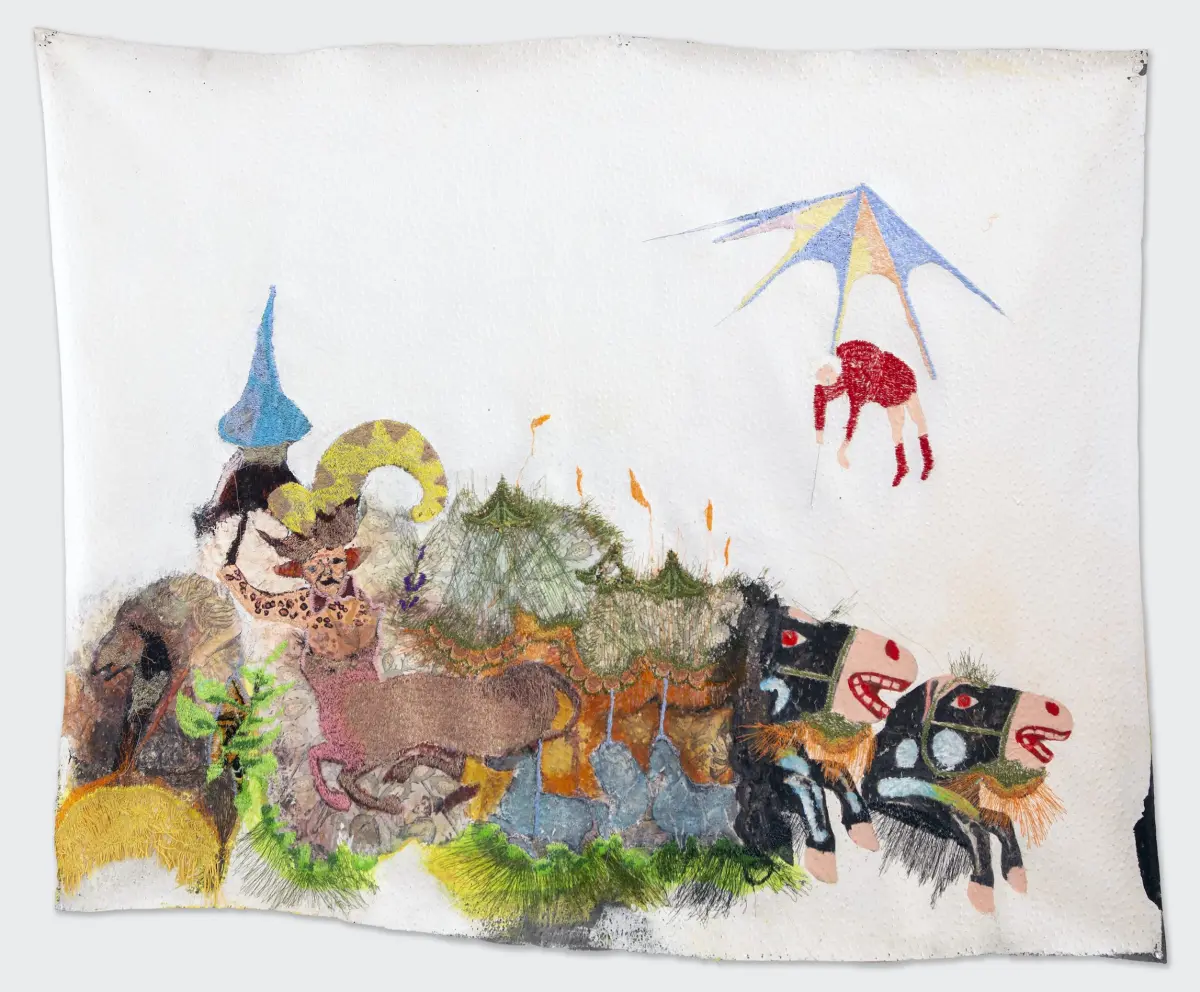
In “Paraísos sumarios de la Fe (misa fronteriza)” (“Summary of faith (border mass),” 2022), Rosas intertwines colonial and traditional Mexican religious imagery. Gray-hooded penitents and a partially veiled Madonna (Our Lady of Guadalupe, the Indigenous patron saint of Mexico) evoke the foreign (Spanish) presence, overlaying a loose map of the Americas — a reminder of the aggressive erosion of faith and culture suffered by the Indigenous inhabitants at the hands of the Spanish and, subsequently, other European powers.
Rosas’s exploration extends to family in “Madre e Hijo,” a series intertwining the crafts and artwork of multiple generations within her own family, building upon her son’s drawings. Employing stitching, collage, and watercolor, Rosas sustains an ongoing conversation about straddling two cultures, negotiating language, and shaping identity on the border. Initially hesitant to share his work with his mother, her son now recognizes their joint creations in the exhibition, feeling a sense of honor and pride.


